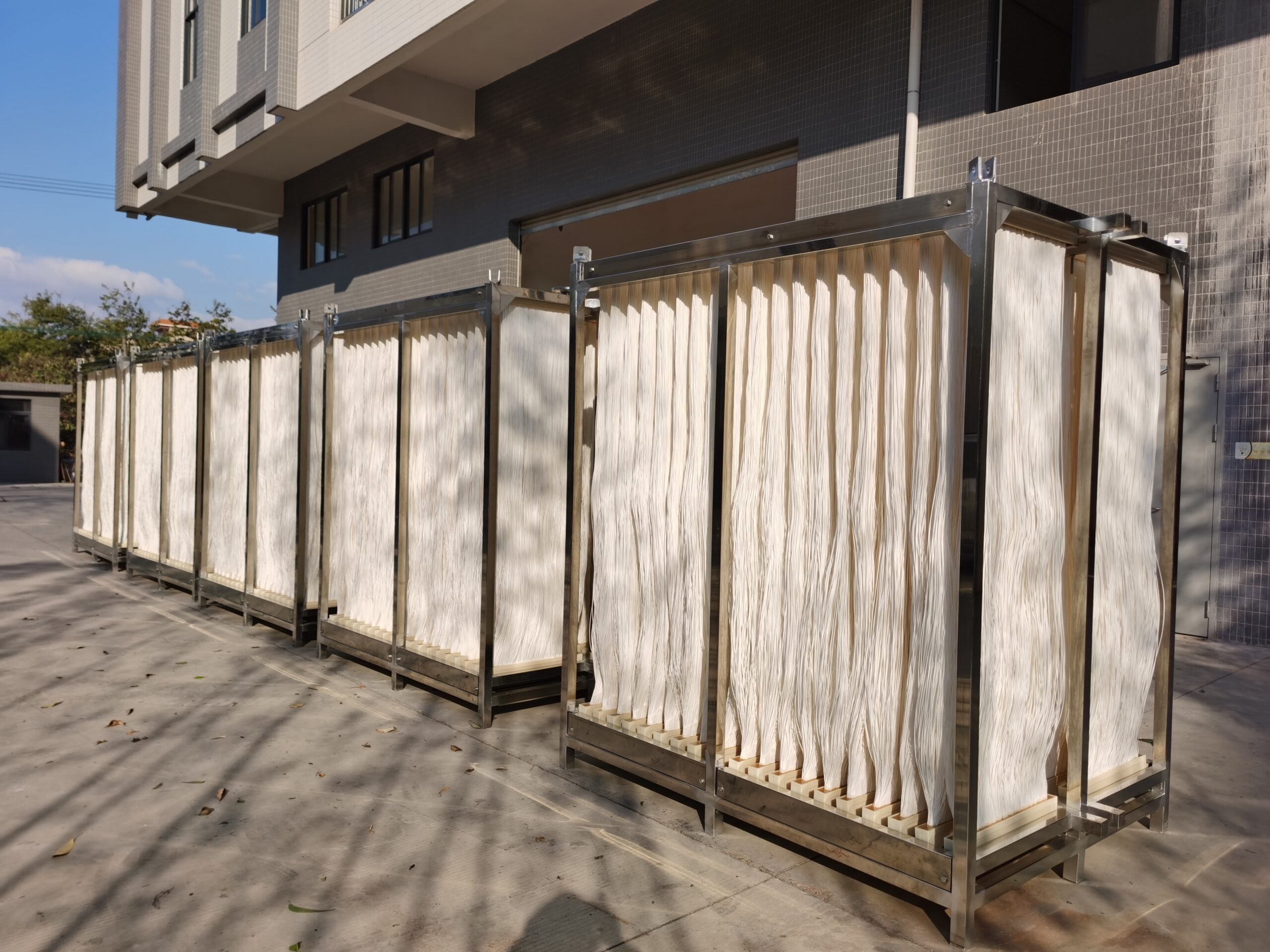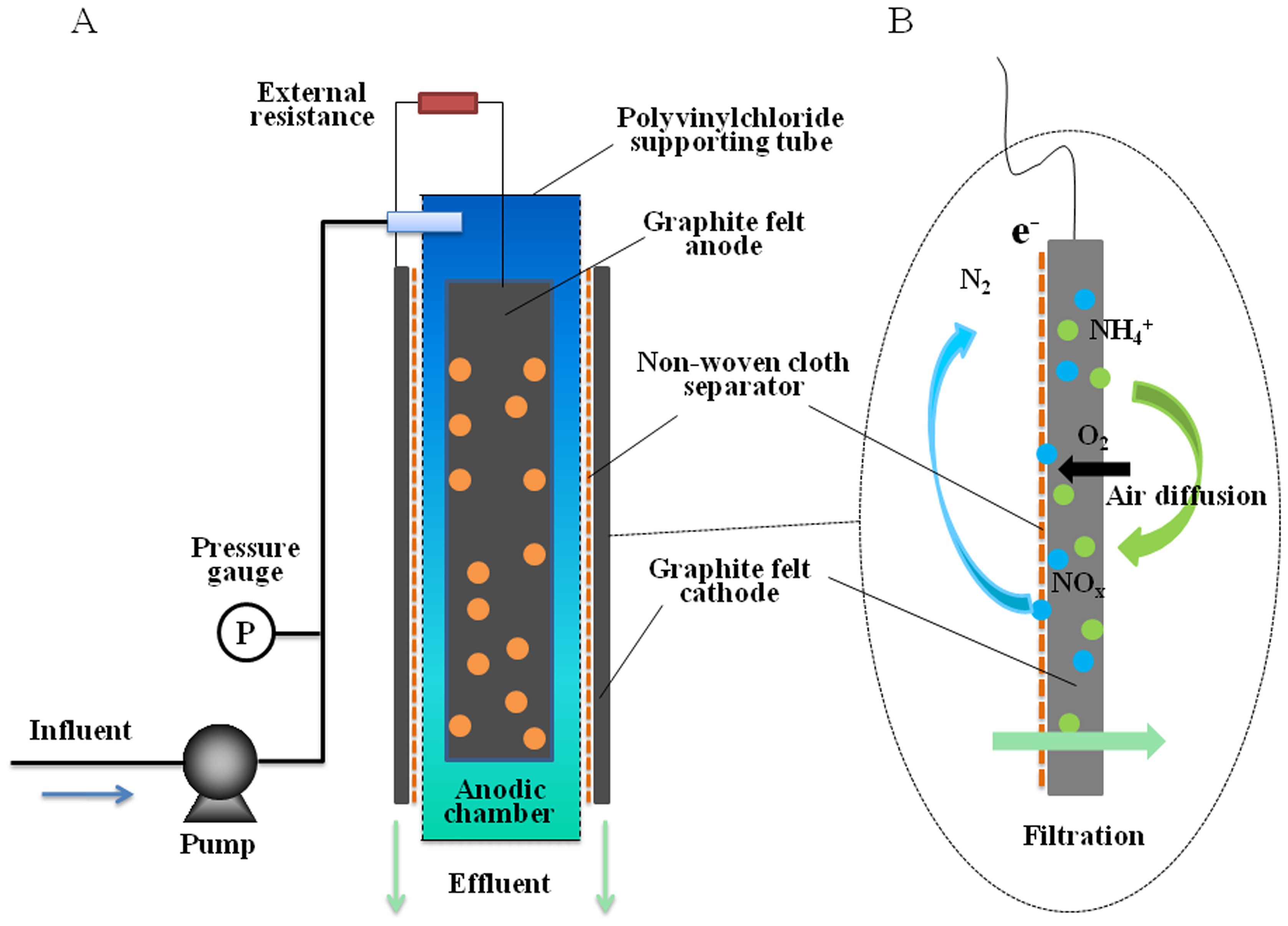The Advantages of Using a Membrane Bioreactor for Efficient Water Purification
The Advantages of Using a Membrane Bioreactor for Efficient Water Purification
Blog Article
Membrane Layer Bioreactors Discussed: Effective Solutions for Tidy Water
Membrane bioreactors (MBRs) have actually arised as a sophisticated service for resolving journalism challenges of wastewater treatment. By integrating biological processes with sophisticated membrane layer filtering, MBRs not just boost the top quality of cured water but likewise decrease the spatial demands of treatment facilities. As environmental issues increase, the duty of MBR modern technology in advertising lasting water monitoring comes to be significantly substantial. Nevertheless, the intricacies of their operation, advantages, and potential applications merit a closer examination to totally recognize their influence on the future of water therapy.

What Are Membrane Layer Bioreactors?
Membrane layer bioreactors (MBRs) are sophisticated wastewater treatment systems that incorporate biological degradation procedures with membrane filtration modern technology. This combination enables the effective elimination of contaminants from water, making MBRs a recommended option in various applications, consisting of community wastewater therapy and industrial effluent monitoring.

One of the critical benefits of MBRs is their ability to create high-quality effluent, commonly appropriate for reuse in watering or industrial processes. In addition, MBRs need a smaller sized impact compared to traditional therapy systems, making them suitable for urban settings where room may be limited.
In addition, MBRs can efficiently take care of varying influent tons and are much less vulnerable to the impacts of toxic shocks. These qualities add to their expanding appeal as a sustainable option for resolving the increasing demand for tidy water while decreasing environmental impacts.
Exactly How Membrane Layer Bioreactors Job
While the procedure of membrane bioreactors (MBRs) may seem complicated, it essentially focuses on the harmony in between organic processes and membrane filtration. MBRs integrate a biological treatment process, normally turned on sludge, with a membrane layer splitting up unit to treat wastewater efficiently.
In an MBR system, wastewater is first introduced into a bioreactor where microorganisms deteriorate raw material and other contaminants. The organic activity reduces the concentration of pollutants while promoting the growth of biomass. Following this biological therapy, the combined alcohol undergoes membrane layer filtering, which can be microfiltration or ultrafiltration, relying on the wanted effluent top quality.
The membrane layers work as a physical obstacle, permitting water and little solutes to pass while maintaining suspended solids and larger molecules. This makes it possible for the system to keep a high focus of biomass within the reactor, enhancing the treatment performance.
In addition, the constant separation of treated water from the biomass promotes a portable style and reduces the footprint of the therapy facility. In general, the combination of organic deterioration and membrane purification in MBRs leads to effective and dependable wastewater therapy, guaranteeing premium effluent suitable for numerous applications.
Advantages of MBR Technology
Among the essential advantages of membrane layer bioreactor (MBR) technology is its capacity to create top quality effluent with a considerably reduced impact compared to standard wastewater treatment approaches. MBR systems efficiently incorporate biological therapy and membrane layer purification, leading to superior elimination of impurities, consisting of suspended solids, microorganisms, and organic issue. This capacity results in effluent that often satisfies or exceeds rigid regulatory requirements for reuse and discharge.
In addition, MBR technology permits for higher biomass concentrations, which boosts the treatment effectiveness and lowers the required reactor quantity. This portable design is especially valuable in urban areas where room is restricted. The operational flexibility of MBR systems likewise suggests they can adapt to varying influent high qualities and circulation prices, making them ideal for a wide variety of applications.
In addition, the reduced sludge production connected discover here with MBR procedures adds to decrease functional and upkeep costs. The membranes serve as a physical barrier, lessening the threat of obstructing and making it possible for longer operational durations in between cleansing. On the whole, the advantages of MBR technology make it an attractive service for sustainable wastewater treatment, dealing with both environmental problems and the demand for reliable source monitoring.
Applications of Membrane Layer Bioreactors
With their convenience and performance, membrane layer bioreactors (MBRs) locate applications throughout different markets, including metropolitan wastewater treatment, industrial processes, and even water recovery. In metropolitan setups, MBRs supply a small service for treating wastewater, effectively getting rid of impurities while all at once generating top notch effluent that satisfies strict regulatory standards. This makes them specifically appropriate for areas with limited room.
In industrial applications, MBR technology is made use of for treating process water, particularly in sectors such as food and beverage, drugs, and petrochemicals. These sectors benefit from MBRs' capacity to manage high organic lots and their efficiency in recovering beneficial resources from wastewater, such as nutrients and water.
Moreover, MBRs play a critical function in water reclamation campaigns, enabling the reuse of dealt with wastewater for irrigation, commercial processes, or perhaps as drinkable more tips here water after more treatment (Membrane Bioreactor). Their efficiency in eliminating pollutants and microorganisms makes them a dependable selection for guaranteeing water high quality in various reuse applications
Future of Water Therapy Solutions
The future of water therapy remedies is positioned for transformative developments driven by technical technology and boosting environmental understanding. As worldwide water shortage comes to be a pushing problem, brand-new techniques, including membrane bioreactor (MBR) systems, are readied to play an essential duty in enhancing the effectiveness and sustainability of water treatment procedures.
Emerging modern technologies such as fabricated intelligence and artificial intelligence are expected to maximize treatment procedures, permitting real-time monitoring and anticipating maintenance. This will certainly boost the general dependability and effectiveness of water treatment facilities. Advancements in membrane products, such as graphene and nanofiltration, assure to boost permeation prices and YOURURL.com minimize fouling, leading to reduced energy consumption and functional expenses.
Additionally, the combination of renewable resource resources right into water treatment plants will certainly contribute to greener methods. The circular economy design will certainly likewise gain traction, urging the recovery of valuable resources from wastewater, such as nutrients and power.
Final Thought

Membrane bioreactors (MBRs) have actually arised as an innovative service for resolving the pressing challenges of wastewater treatment. By integrating organic procedures with sophisticated membrane layer purification, MBRs not only boost the high quality of cured water however also reduce the spatial demands of treatment facilities.One of the key advantages of membrane layer bioreactor (MBR) innovation is its capability to generate premium effluent with a dramatically reduced footprint compared to traditional wastewater treatment methods.With their adaptability and efficiency, membrane bioreactors (MBRs) find applications throughout different markets, including municipal wastewater treatment, industrial processes, and also water improvement.In conclusion, membrane layer bioreactors stand for a considerable improvement in wastewater therapy innovation, incorporating organic procedures with efficient membrane purification to generate high-quality effluent.
Report this page